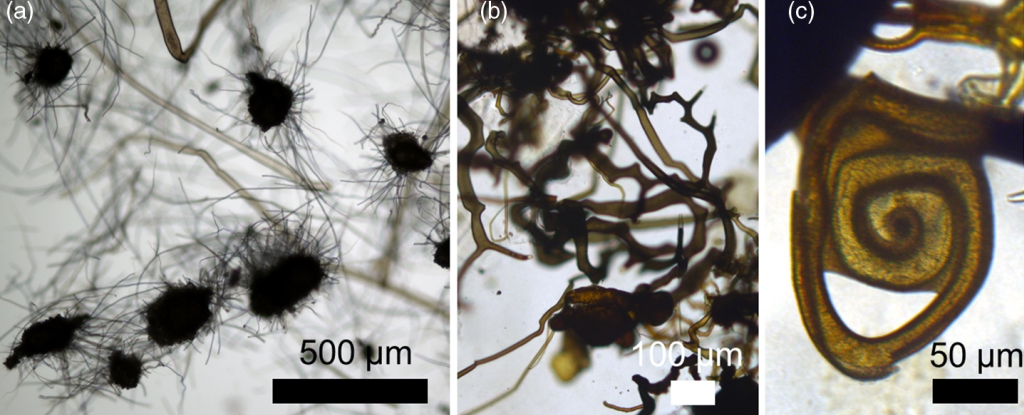When looking for signs of life on Mars, we need to look out for 'false fossils' that may be abundant on the Red Planet, according to a new study.
Mars rover Perseverance lists, among its mission objectives, a first for red planet exploration. The robotic explorer has been tasked with searching for signs of ancient microbial life on the dusty, dry planet – tiny microfossils that would be evidence that Mars was once habitable.
That would indeed be an astounding, incredible discovery – but the new paper urges caution in interpreting what we find, in both this and future sources.
According to astrobiologist Sean McMahon of the University of Edinburgh and geobiologist Julie Cosmidis of the University of Oxford in the UK, scientists will have to keep an eye out for non-biological mineral deposits that look a heck of a lot like fossils.
In a new paper, the pair have outlined dozens of non-biological, or abiotic, processes that can produce pseudofossils – structures that look like fossils of microscopic organisms like those that may have once existed on Mars.
"At some stage a Mars rover will almost certainly find something that looks a lot like a fossil, so being able to confidently distinguish these from structures and substances made by chemical reactions is vital," McMahon said.
"For every type of fossil out there, there is at least one non-biological process that creates very similar things, so there is a real need to improve our understanding of how these form."
This notion is not exactly surprising. Mars is an absolute feast for pareidolia and conspiracies. All you need is one funny-looking rock and the rumors run riot.
It's not just tabloids and conspiracy theorists, either – scientists have indulged in Mars fantasies, too. You might remember the time mycologists thought they might have found mushrooms on Mars, or the entomologist who thought he'd found bugs.
Microfossils might therefore be quite problematic. Even here on Earth, we struggle to tell the difference between really old rocks and fossils of ancient microbes.
But, if we enter analysis of any potential microfossils on Mars knowing the processes that can produce pseudofossils, we have a better chance of accurately interpreting what we're seeing.
Many physical processes associated with weathering and the depositing of sedimentary layers can produce rocks that look eerily like fossils.
Another mechanism is the chemical garden, in which chemicals mixing can produce structures that look biological. Many different types of minerals can also combine to produce pseudofossils known as biomorphs, which look strikingly biological.
You can see an example of chemical garden pseudofossils below.
 Chemical garden pseudofossils. (McMahon & Cosmidis, J. Geol. Soc., 2021)
Chemical garden pseudofossils. (McMahon & Cosmidis, J. Geol. Soc., 2021)
Even textures in the rock can look biological, since organisms can etch patterns or holes into stone. And isotope ratios of various elements can appear similar to isotope ratios in biological contexts.
Since we don't know what kind of life could have emerged on Mars – it might be quite different from life here on Earth – and since, as McMahon and Cosmidis noted, there are likely many unknown processes that can produce pseudofossils, biologists looking for life on Mars are going to have to be very careful indeed.
The researchers also note that more work, perhaps even experimentation, into the chemistry and physics of Mars could reveal some of these unknown processes, and shed more light on how such formations might be produced. This work could even help us better understand Earth's rock and fossil record.
"We have been fooled by life-mimicking processes in the past," Cosmidis said.
"On many occasions, objects that looked like fossil microbes were described in ancient rocks on Earth and even in meteorites from Mars, but after deeper examination they turned out to have non-biological origins. This article is a cautionary tale in which we call for further research on life-mimicking processes in the context of Mars, so that we avoid falling into the same traps over and over again."
The research has been published in the Journal of the Geological Society.
#Space | https://sciencespies.com/space/scientists-warn-about-false-fossils-present-on-mars/
No comments:
Post a Comment